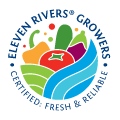Bioplastics and the Future of Food Packaging

In the 1960s movie, “The Graduate,” actor Dustin Hoffman was given one word of advice as a young man about to enter the world: plastics.
That watchword represented the future of, well, just about everything.
Indeed, plastics have become omnipresent in our society; however, if the scene was updated to our contemporary world, he may have been given another word of advice to watch: bioplastics.
The evolution of biodegradable polymers used for everything from bottles and cups to chip bags and coffee pods is gaining ground. The big news is that they’re made from materials that are safe and able to be discarded into a compost bin, rather than a recycling one. Food packagers are starting to adopt the material, with the European Union leading the charge and other regions rapidly following suit.
Francois de Bie is the senior marketing director with Total Corbion PLA, a Netherlands-based company that makes polylactic acid (PLA), a biodegradable polymer made from renewable or recycled resources. Their showcase at the National Plastics Expo in Orlando in May 2018 demonstrated the use of bioplastics, particularly in the food packaging industry.
Starch and PLA are leading biodegradable polymers used in food and beverages packaging. They’re bio-based with no harmful chemical within the polymer. Producers of the products also tout they have a reduced carbon footprint versus many traditional plastics.
According to de Bie, consumers are leaning towards not just food products that have a healthy or “earthy” story behind them. “The first thing a customer sees is the packaging,” says de Bie. When they learn it’s bio-based, it helps shape their decision to purchase it
Steve Lynn, an engineer with Preform Solutions, Inc., Sioux Falls, S.D., says that “food is growing in a natural sustainable direction. [Companies] like to state that the packaging is bio-based.”
Whether the material is bio-based or just plain recycled plastics, they must be approved for use in food products. Specifically, Total Corbion’s introductory products are compliant with an EU standard. PLA is safe for food products and also has the properties that many food products need.
For example, the polymer is used make bio-based pods used for coffee and tea for the European company LaCopa. Total Corbion polymers go into coffee cups, cup lids, teabags, and bottles. In fact, many of their products are found in end-use products throughout Europe, where bio-based polymers for food and beverage seem to dominate. North America is behind them and Asia-Pacific nations rank behind both.
Previously, products made from plastic could only be recycled, if that. Now PLA material can degrade in a landfill without recycling.
Bigger brands are going slower than smaller brands, according to de Bie. For example, Frito Lay has chip brand containers that are made from bio-based plastic material that may also compost and degrade without being recycled. For the larger brands, however, there’s a cost associated with this type of material. Plus, there’s a technical niche that they must go through.
Thus, brands like Frito Lay are piloting the bio-based material to determine the economics of the packaging and if the product gets the traction they need to retool to sell products with that sort of packaging. Smaller brands are smartly hanging their hat on the bioplastic niche and “good for the earth” benefit as part of their overall marketing strategy.
Bio-based packaging will likely be more prominent in the future—for smaller niche brands, but also for larger ones. The market is sizeable. According to researcher Coherent Market Insights, the global market for biodegradable food packaging stands at about $3.92 billion.
As material science for such polymers continues to gain approval, stand audits, and complement the healthy and organic products they contain, they will become more popular.
In all likelihood, given the choice between bio-based plastics packaging (prominently labeled as such), and those made from traditional plastic, discerning consumers will continue to lean towards the former.
Fuente: www.foodqualityandsafety.com


